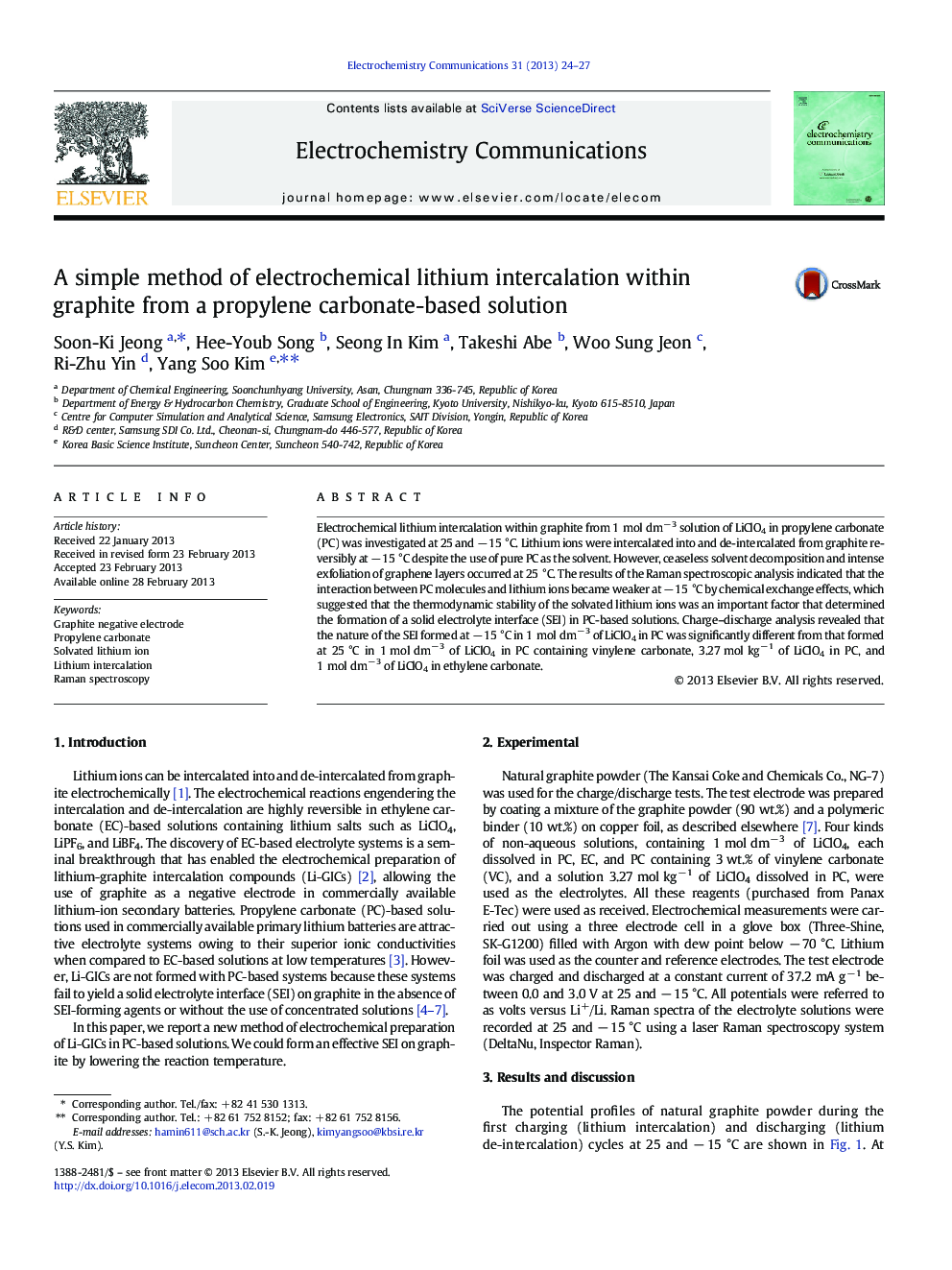| کد مقاله | کد نشریه | سال انتشار | مقاله انگلیسی | نسخه تمام متن |
|---|---|---|---|---|
| 179288 | 459344 | 2013 | 4 صفحه PDF | دانلود رایگان |

• Lithium ion was intercalated into graphite in a PC-based solution at − 15 °C.
• An effective SEI was formed on graphite by lowering of the reaction temperature.
• The SEI formed at − 15 °C was stable and effective for protecting graphite at 25 °C.
Electrochemical lithium intercalation within graphite from 1 mol dm− 3 solution of LiClO4 in propylene carbonate (PC) was investigated at 25 and − 15 °C. Lithium ions were intercalated into and de-intercalated from graphite reversibly at − 15 °C despite the use of pure PC as the solvent. However, ceaseless solvent decomposition and intense exfoliation of graphene layers occurred at 25 °C. The results of the Raman spectroscopic analysis indicated that the interaction between PC molecules and lithium ions became weaker at − 15 °C by chemical exchange effects, which suggested that the thermodynamic stability of the solvated lithium ions was an important factor that determined the formation of a solid electrolyte interface (SEI) in PC-based solutions. Charge–discharge analysis revealed that the nature of the SEI formed at − 15 °C in 1 mol dm− 3 of LiClO4 in PC was significantly different from that formed at 25 °C in 1 mol dm− 3 of LiClO4 in PC containing vinylene carbonate, 3.27 mol kg− 1 of LiClO4 in PC, and 1 mol dm− 3 of LiClO4 in ethylene carbonate.
Journal: Electrochemistry Communications - Volume 31, June 2013, Pages 24–27